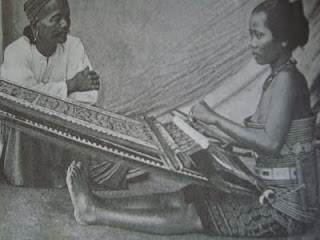Today, it was announced that I received an ERC Consolidator Grant of 2 million euros for my research proposal Race to the Bottom? Family Labour, Household Livelihood and Consumption in the Relocation of Global Cotton Manufacturing, ca. 1750-1990. This means that I can form a team of 5 people to historically study the role of household labour and consumption in the relocation of textile production across the world. For this, I will use, and link together, a large body of different data, such as wage data, trade data, and household budgets, but also more qualitative material such as ethnographic studies, travel accounts and reports found in national, colonial and regional archives.
About the project
Globalization and the shift of industries and jobs to low-wage countries are hotly debated political issues, but have deep historical roots. For centuries, cotton manufacturing has been central in global trade and industrial relocation. Textile production has existed almost everywhere, but its major export production centres have relocated in the past 250 years, notably from Asia to Europe/the US, then back to Asia. When and why these shifts occur is however still poorly understood. Reducing labour costs has been argued to be central in this ‘race to the bottom’, but this does not explain why textile production was resilient in some regions and periods, and not in others.
The project Race to the Bottom? Family labour, household livelihood and consumption in the relocation of global cotton manufacturing explores the macro-economic global relocation of textile production from a micro-level perspective: households’ labour and consumption decisions. It comprises a comparative study of changes in labour allocation and consumption at the household level, to deepen macro-level studies on global textile production. It will investigate to what extent, and how, gendered allocation of work on the household level impacted macro-economic shifts in labour division. It will scrutinize households’ multiple livelihood strategies, and relate this to the resilience or disappearance of local textile industries. Finally, it will analyze how local consumption patterns have influenced the continuation and disappearance of particular types of textile manufacturing over time and space. This lends workers and households the agency that most studies have so far overlooked, thus offering new explanations for regional as well as global divisions of labour.
The project consists of 6 sub-projects. Project 1 forms the quantitative backbone of the project, as it will construct a global database of textile wage rates specified by gender, international trade flows, textile prices, and tariffs applied to textile imports by national governments. Thus, it provides the context of market forces and institutions, informing households’ decisions on how to allocate their labour. Empirically, it will be the first data collection of this scope on the quantitative development of the textile industry. Analytically, it will establish relations between gendered wage trends and textile trade developments by using econometric techniques. Data will be gathered from existing databases (e.g. Terms-of-trade database Williamson; Clio-infra; World Bank), but new data will also be collected (ILO archives, Colonial Blue Books, Statistical Bureau archives). These wage rates will serve as the basis for establishing trends in living standards in sub-projects 2-6, by applying Robert Allen’s method of establishing welfare ratios, adjusted for various measures of household size and income.
Projects 2-4 will involve more in-depth comparisons and/or connections between specific regions, which have at one point in time been leading textile manufacturers in the world: China, India, the UK, the USA, Japan and Indonesia. Project 2 is a comparison of colonial and postcolonial connections in textile production between the Dutch and British Empires. This builds on my research on textile production in the Dutch Empire, empirically challenging neoclassical economic de-industrialization theory (Van Nederveen Meerkerk 2017). I now wish to take this research forward by making a comparison of colonial and postcolonial connections with British-India. Moreover, project 5 examines the mechanisms underlying the historic failure of large-scale textile production to take off in sub-Saharan Africa.
The four comparative sub-projects 2-5 will take the household as the focal point of their analysis. It will be explored how textile wages related to other sources of income, both monetary and non-monetary, obtained by the different household members. One very important source, which is relatively unexplored, and amply available for all of the case studies, will be surveys of household budgets. These sources enable both quantitative and qualitative analysis of sources of income and consumption on the household level. The budget analyses will be complemented with additional archival evidence and literature specific to each region, to assess the representativeness of the household data and to frame them in the specific socioeconomic context, thus establishing the relationships between developments on the micro- and macro-level.
Based on the first five projects, the PI will in the final two years of the project write a global comparative monograph (sub-project 6), systematically tracing out similarities and differences in the impact of household behaviour on the transformation of global textile production. On top of this, the combined projects will result in a collaborative website, which will publish the constructed databases, working papers and other publications. This website serves to make publicly available all data and information, and, eventually, to become a platform for researchers studying the history of textile manufacturing worldwide.


Great project, Elise! Echt geweldig hoe je erin slaagt beurzen binnen te halen voor historisch onderzoek op het gebied van genderrelaties en arbeid. Ik wens je heel veel succes!
Dank je Marina! Hopelijk gaat het jou ook goed
Congratulations Elise! Great news. Really excited to follow the research you and your team will be undertaking.
Thanks Yuliya! Hope you are doing well in Cambridge…